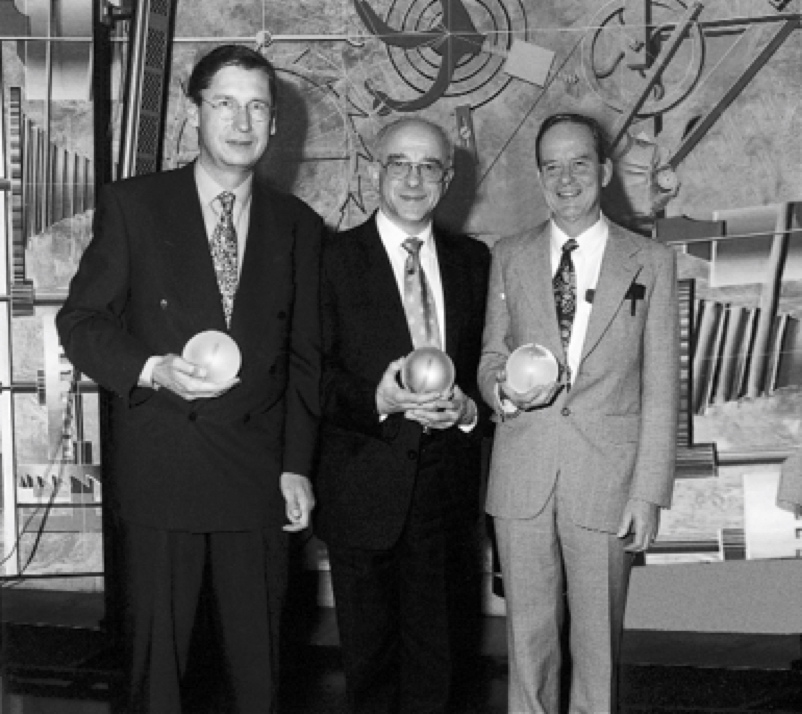

Prix Gaïa 1997 – Jean-Pierre Musy. Entrepreneurship category
He was recognized for the major role he played in the development of great complications as project manager and designer for Patek Philippe.
Training
ETS microengineering
Selected works
- Design and production of the Caliber 89 for Patek Philippe, the world's most complicated watch to date.
- Design and production of the first minute repeater watch with a micro rotor self-winding movement with a perpetual calendar and a Patek Philippe tourbillon.
Before Gaïa
After graduating from the engineering school in Neuchâtel with an ETS microengineering diploma, he started his career as a design engineer in the Research and Development department at Ebosa SA in Granges.
In 1977, four years later, he chose to leave the manufacture to work at the Société Suisse pour l'Industrie Horlogère (SSIH) in Bern. During his time there, he produced the 1.35-mm thick Magic watch, which displayed its hands on transparent disks, on the occasion of the 10th anniversary of quartz watches at Omega.

In 1981, Musy resigned from the SSIH to join Patek Philippe SA in Geneva as engineer in the Research and Development department. During his time there, he was the project manager for the production of Caliber 89, the most complicated watch to date with thirty-three different complications. Only four pieces were created, one of which was sold at CHF 4,800,000 during an auction at Antiquorum. At the same time, from 1986 to 1989, Musy also developed and assembled the first minute repeater on a micro rotor self-winding movement with a perpetual calendar and a tourbillon.
Both watches were created to celebrate the 150th anniversary of Patek Philippe in 1989. The manufacture filed for approximately ten patents from 1976 to 1996, among which were an ultra-thin watch with a transparent display, a mechanism displaying Easter, a retrograde secular perpetual calendar mechanism and a split-seconds and insulating mechanism. In 1990, Musy assumed the role of assistant director of the Movement Production department, before he was appointed the Production and Technical department director three years later.
In 1996, he was appointed technical director of the team that came up with the annual calendar, the first piece of this kind to be issued on the market. In 1996, it was voted watch of the year by a jury made of watch professionals. In 1997, he was appointed the Watch Production and Technical department (movements and exterior parts) director.
After Gaïa
Musy today still designs watches for Patek Philippe. In 2000, he released the Star Caliber 2000 pocket watch, which was made of 1118 components and for which six patents were filed. In 2001, he introduced the Sky Moon Tourbillon wristwatch, a double-sided watch with the reverse side displaying an entire representation of the sky


